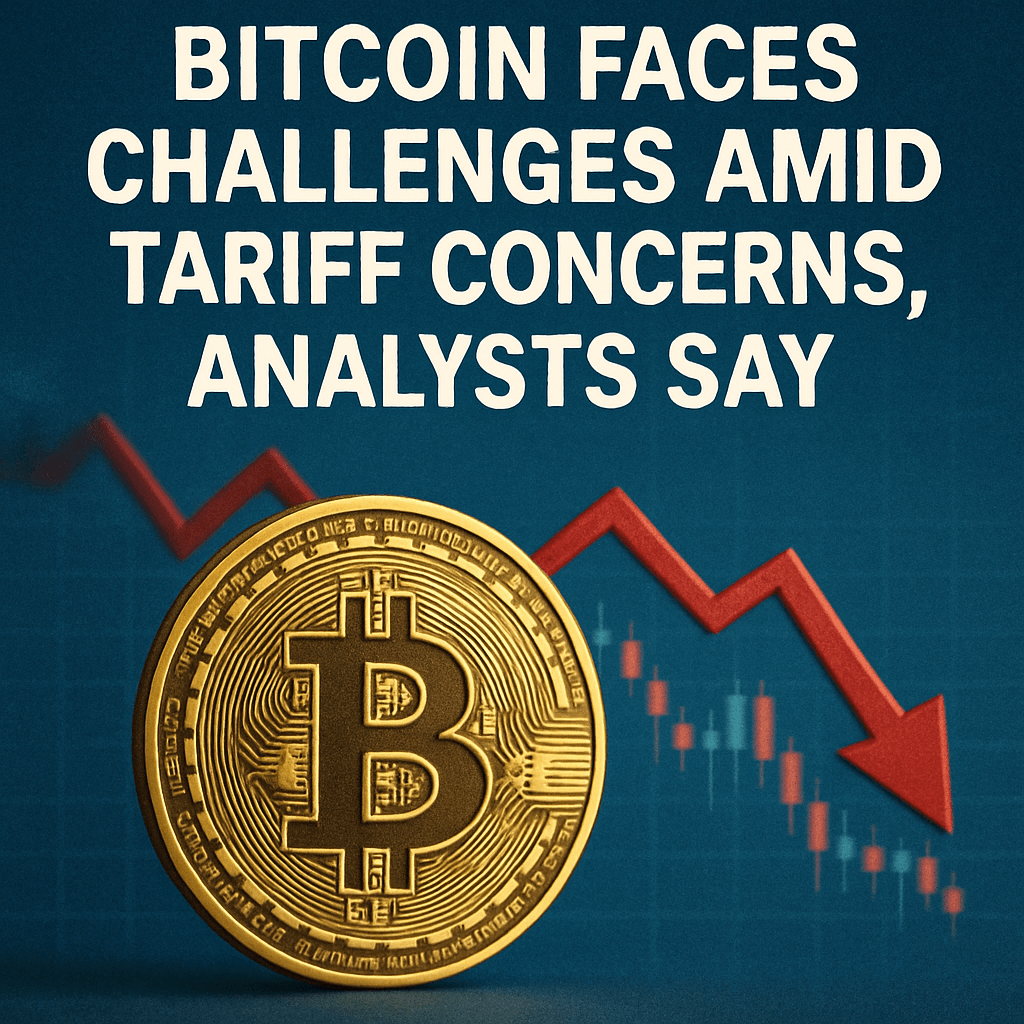Bitcoin Faces Challenges Amid Tariff Concerns, Analysts Say


The Current Landscape for Bitcoin
The cryptocurrency market has been on a volatile ride, largely influenced by macroeconomic factors, regulatory changes, and geopolitical tensions. As Bitcoin approaches critical resistance levels, analysts are scrutinizing various factors that could influence its trajectory.
According to Pav Hundal, the lead analyst at Swyftx, recent discussions surrounding tariff ultimatums present a significant challenge for Bitcoin bulls. The industry is currently observing potential tariffs being used as negotiating tools in international relations, which could lead to erratic market behaviors.
The Tariff Ultimatum Phenomenon
Tariffs, which are taxes imposed on imported goods, can serve as crucial tools in economic policy but also create tension and uncertainty. In the context of cryptocurrency, tariff ultimatums could lead to increased regulatory scrutiny and uncertainty about market accessibility.
- Market Volatility: The prospect of tariffs may lead to market sell-offs, as investors often react negatively to uncertainty.
- Regulatory Implications: Increased tariffs could prompt scrutiny from regulators, thereby impacting cryptocurrency exchanges and trading practices.
- International Relations: Tariffs could signify broader geopolitical conflicts that tend to negatively affect market sentiment.
The $120,000 Forecast
Despite the looming threats, Hundal suggests that an end to the current “tariff sabre rattling” could result in a bullish rally for Bitcoin, potentially pushing the price towards a high of $120,000. This prediction hinges on various market conditions including investor sentiment, adoption rates of digital currencies, and macroeconomic stability.
Factors Supporting Bitcoin’s Bullish Potential
- Increased Institutional Adoption: Many institutions are now investing in Bitcoin, viewing it as a hedge against inflation and currency devaluation.
- Technology Upgrades: Enhancements like the Taproot upgrade have improved Bitcoin’s capabilities, bolstering its appeal.
- Macro-Economic Influence: With inflationary pressures being a concern for many economies, Bitcoin’s finite supply makes it an attractive asset.
Technical Analysis and Market Indicators
Technical indicators suggest that Bitcoin’s performance may be positively impacted by breaking key resistance levels which may lead to increased trading volumes. Analysts often look at the Relative Strength Index (RSI), moving averages, and Fibonacci levels as critical tools in timing market entries and exits.
In addition, momentum indicators reflecting increased buying interest could set the stage for a favorable price movement in the weeks ahead.
Conclusion: A Complicated Outlook
In conclusion, while Bitcoin has faced significant challenges due to potential tariff ultimata, analysts remain cautiously optimistic. The interplay between geopolitical factors and market psychology will be crucial in determining Bitcoin’s next movements. As always, investors are advised to stay informed and carefully assess the external factors that could impact their investments.
“Market reactions to macroeconomic policies can be unpredictable, and cryptocurrency is often at the mercy of global sentiment.” – Analyst Insight